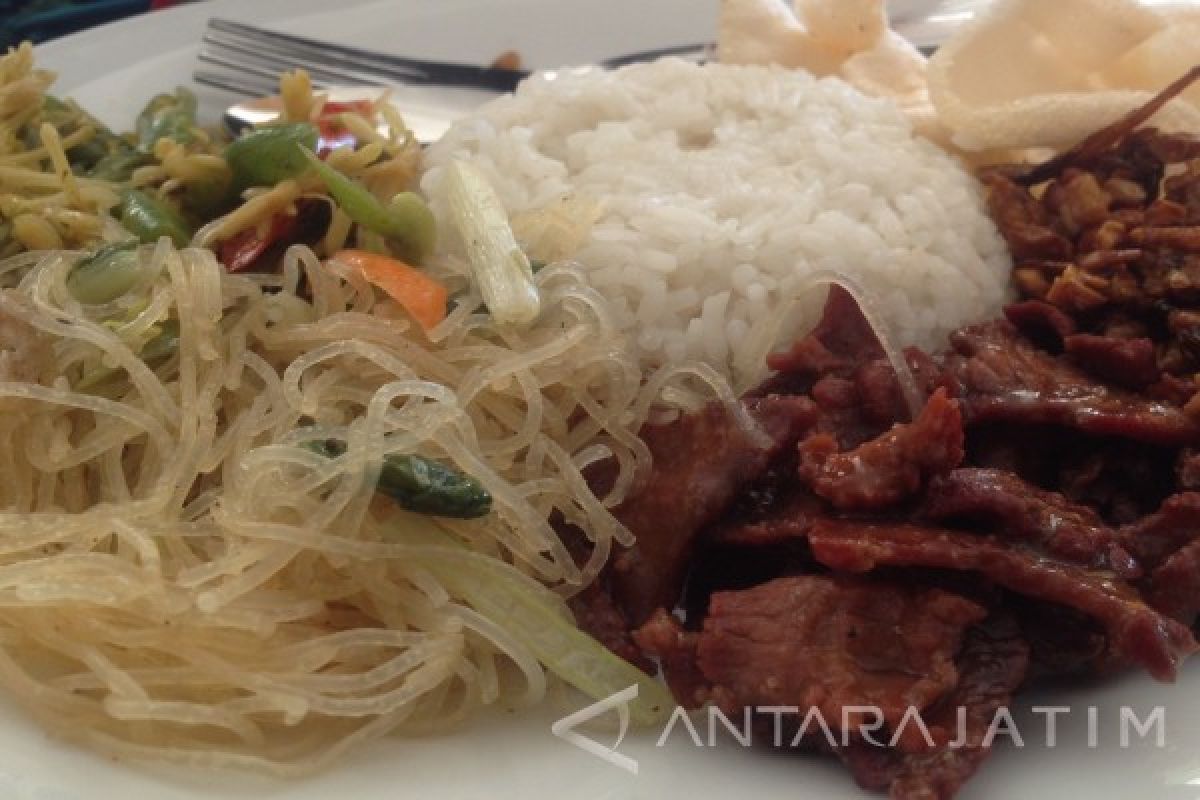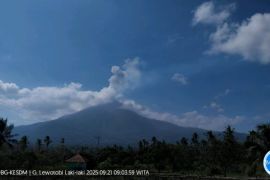If they catch fish from the sea, they don't use much seasoning to cook the fish so they can enjoy the sweet taste of the fish meat. That's because the fish is fresh from the seaJakarta (ANTARA) - Indonesia is famous for the variety of its traditional food, which is rich in spices and flavors ranging from spicy, salty, savory, and sweet, which blend harmoniously to create an appetizing aroma.
However, spice-rich traditional dishes are not commonly found in the culinary culture of East Nusa Tenggara (NTT) province. But the taste of local food from the eastern part of Indonesia is not any less delicious.
Ade Putri, a culinary storyteller who had accompanied celebrity chef Gordon Ramsay on a taste adventure in West Sumatra, shared her experience on tasting NTT's traditional dishes. NTT's local food has some unique characteristics including very minimal use of spices, she said.
NTT's cuisine is unique since it emphasizes the original taste of its ingredients, and it does not contain a lot of -- just a moderate amount of -- seasoning, she added.
Besides, the cooking process of NTT's cuisine is relatively simple, she said.
Related news: Tracking the spice trail to Banda
The people of NTT usually do not add too much or a variety of spices to their food, according to Renata Puji Sumedi Hangarawati, agroecosystem program manager at the Indonesian Biodiversity Foundation.
"If they catch fish from the sea, they don't use much seasoning to cook the fish so they can enjoy the sweet taste of the fish meat. That's because the fish is fresh from the sea," Hangarawati explained.
"For instance, their favorite menu ... fish in sour sauce, they only season the fish with a little bit of ginger, galangal, tomato, salt, and sliced lime leaves. The taste is extraordinary," she remarked.
Despite minimal use of materials, there are actually many food sources in the eastern part of Indonesia, she said.
The pattern of healthy local food consumption in NTT has become a tradition, she added. The local food sources are available in nature and managed wisely and remain nutritious, ranging from sources of carbohydrates, vegetable protein to land and sea animal protein, Hangarawati explained.
Along with modernization, however, the good habits of healthy food consumption have started to fade and change to instant food consumption, she said.
Related news: On the scent of the Dutch nutmeg on Banda Islands
"We need to assure people in NTT that their local food is already good and very nutritious and invite them to return to consuming it," Hangarawati remarked.
With some organized socialization, she believes that local farmers can continue to plant local food crops. Moreover, besides being able to consume it by themselves, farmers can also get more economic benefit from selling crops when people start consuming local food again, she said.
Regarding local food ingredients, Indonesia has quite many types of food sources, Hangarawati said. Each region in the country has its own unique food ingredients, she added. As the case in NTT, people can find the following five main food ingredients.
Sorghum
In recent years, sorghum has become one of the most popular local food ingredients in NTT for its gluten-free nature, Hangarawati said.
Sorghum is an ancient cereal grain belonging to the grass family Poaceae. It's small, round, and usually white or yellow — though some varieties are red, brown, black, or purple.
Ade Putri has been eating sorghum for about three years in place of rice.
"Sorghum is also a high-protein food source. People who have to consume plant-based food can get both protein and carbohydrates from sorghum," she said.
Related news: Good Morning Rinjani!
"Its texture and taste are not much different from rice. The cooking method is also the same, you can also cook it using a rice cooker. Only the amount of water is slightly different, but the recommended amount of water is usually listed on the packaging. Recently, I tried to make pancakes from sorghum flour," she related.
In NTT, there are many varieties of sorghum which are rich in fiber and can grow on dry land, she said.
The existence of sorghum as a food source in NTT cannot be separated from local culture, she noted. For example, NTT's Island of Ende has a tradition called Ngoa Lolo ceremony for sorghum, she added.
"If the sorghum disappears, the ceremony will no longer exist," she remarked.
Sorghum has also been proven to be good for health, so it is often given to patients in hospitals, such as diabetic patients, because gluten-free sorghum is useful for lowering blood sugar levels, she said.
Local people often consume sorghum as a cereal. In addition, they also process sorghum flour as a cake ingredient.
Besides the grain eaten, sorghum stalks can be used to make sorghum sugar or fermented into soy sauce.
Jewawut
Another popular local food ingredient in NTT is Jewawut, which is a type of cereal with small seeds that was once the staple food of the people of East Asia and Southeast Asia before rice cultivation became known to them.
Jewawut (Foxtail millet) is not consumed as a substitute of rice by the people of NTT, but rather as a snack.
"I've tasted jewawut which is processed into some porridge. It tastes a bit sweet. Usually, jewawut porridge is consumed as a breakfast menu or afternoon snack," said Putri.
The taste of jewawut itself is bland, so the final taste depends on how people process it by adding spices or flavor enhancers, such as sugar or salt, she said.
Jewawut porridge is often used by the people of NTT to restore the health of people who have just given birth, she pointed out. Consumption of jewawut porridge after giving birth has become a tradition that has been passed down from generation to generation, she noted.
Related news: Explore bamboo pavilion at Taichung World Flora Expo
"Every time someone gave birth, their relatives would make jewawut porridge for her," she said.
Peanuts
NTT is the paradise of many kinds of peanuts. NTT people sometimes mix peanuts into vegetables and rice or make snacks with them, such as fried peanuts and boiled peanuts.
There are various kinds of peanuts from different areas in NTT. For instance, there are green beans from East Flores, and different kinds of red beans -- from Ende, Paleo, and East Flores -- with a plain appearance or ones that look like batik, Putri said.
Putri said that she had tasted a food called corn bose from NTT which looks like peanut porridge.
"It only contains corn and several types of peanuts with very little salt added. What is highlighted is the original taste of those peanuts. The shape of the peanuts is still visible, but the texture is not hard, because it has been cooked for a long time," she explained.
The person who prepared the dish also told me that he had tried fried batik peanuts, which at first glance look like ordinary fried peanuts, but have a different color and taste, she said.
Moringa leaves
In some big cities in NTT, moringa leaves have been widely consumed for their excellent nutritional value.
Moringa is very high in antioxidants, with a vitamin C content that is seven times higher than oranges. It also contains 15 times more potassium than bananas.
The people of NTT have been consuming moringa for a long time because moringa trees thrive in the region.
Moringa is often used to treat malnutrition in children. In fact, it has been used in handling the high number of stunting cases in East Flores.
A public health center in East Flores had even tried to provide additional food -- in the form of sorghum mixed with moringa leaves and other vegetables -- to children with severe malnutrition.
The three-month supplementary food program had succeeded in increasing the weight of stunted children to a healthy level.
The program was then tested in several other public health centers, and later on an additional food campaign was created to promote the consumption of local food combinations made from moringa and sorghum.
This is clear evidence that local food resources are useful to overcome health problems faced by people in the province.
Related news: Goa Rangko's sunlit charm
Coffee
As a beverage, coffee is one of the leading products in NTT. There are many coffee producing areas in NTT, one of which is in the Manggarai district, Flores Island.
Drinking coffee at home for residents of Manggarai has become a tradition. However, in recent years, the habit of drinking coffee has become an event for outdoor socializing in NTT.
NTT's local coffee products are now not only enjoyed at homes, but also in cafés and coffee shops that are starting to grow rapidly there.
The good news is that the local government has set a policy for restaurants and hotels to provide local coffee to promote the potential of local products.
Manggarai district, which is the largest coffee producer in NTT, once organized a coffeepreneur program that provided young people with the knowledge and skills to become baristas and make a business plan to open a coffee shop.
"Nowadays, many young people in NTT want to become baristas. They also learn many things about coffee products, for example, where it is grown, its varieties, and its each kind of cultivation," said Indonesian Biodiversity Foundation's Hangarawati.
In eastern Indonesia, such as in the province of East Nusa Tenggara, the food ingredient itself is the star of the dish so seasoning is kept very minimal.
The variety of local foods in NTT certainly reflect that Indonesia has an extraordinary variety of traditional cultures.
Related news: Traditional fabric can help economy weave success
Related news: A sneak peek into rengkam paradise Amat Belanda Island
Editor: Fardah Assegaf
Copyright © ANTARA 2021












